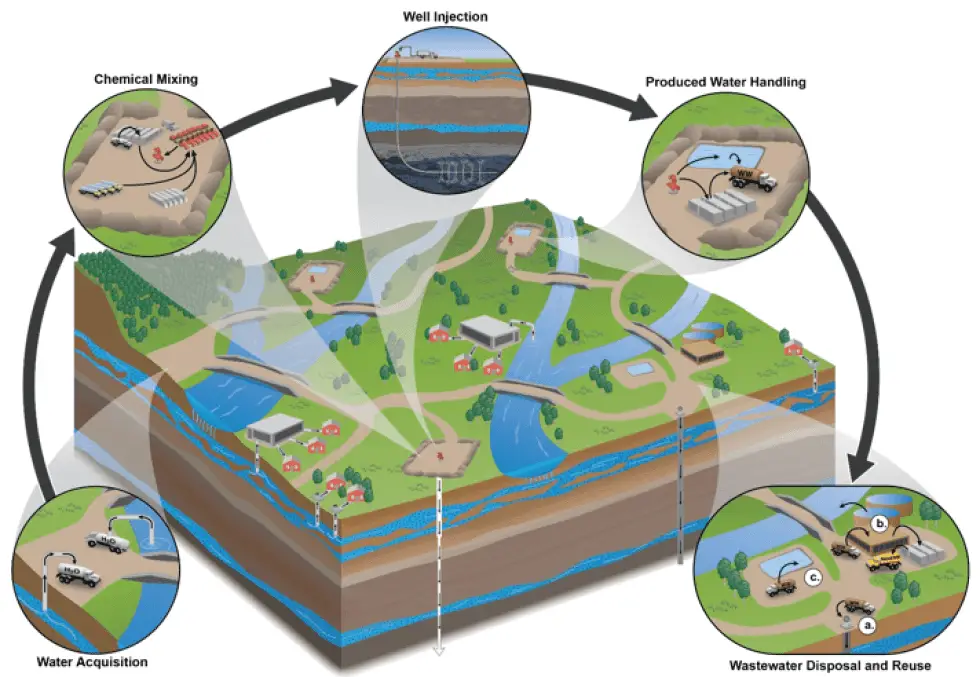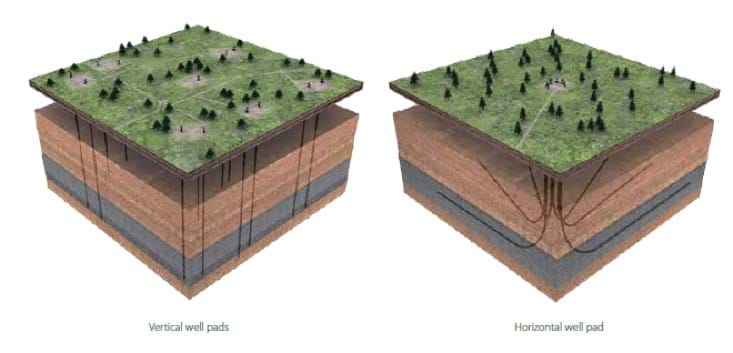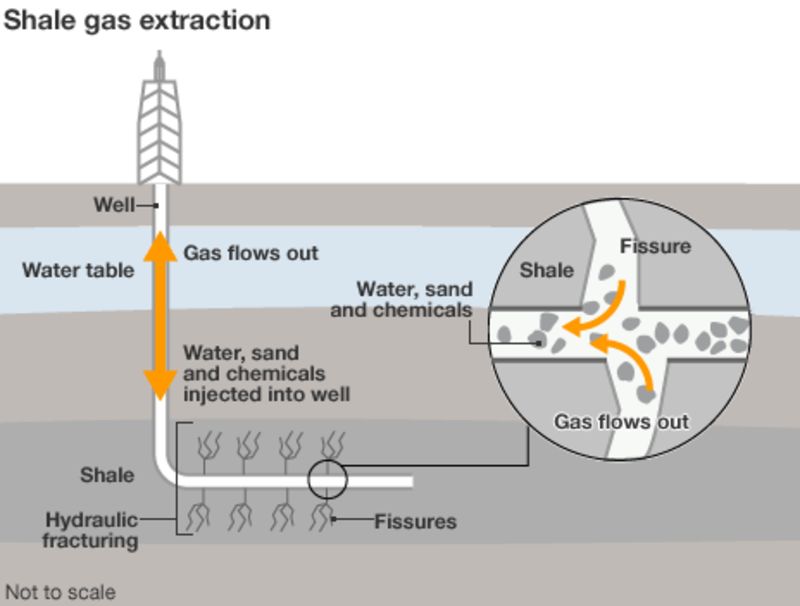Hydrofracking: The Secret Benefits and Alarming Disadvantages
Is Fracking A Good Or Bad Thing?

Hydraulic fracturing also called hydrofracking, and fracking is possibly one of the most significant energy discoveries over the last half-century.
American and Canadian natural gas production has increased significantly since employing hydraulic fracturing.
The natural gas from fracking may get promoted for being the cleanest form of energy from fossil fuels.
But for many people, there are just too many disadvantages from the hydrofracking process.
So keep reading to find out the quick basics on what hydrofracturing is and all the different pros and cons that come with it.
The Basics of the Fracking Process
Hydrofracking involves drilling down deep into what is called a Shale(abundant gas-filled rock deposit). Once reaching the depth of the Shale, horizontal drilling begins.
Water, sand, and chemicals(called proppants) are mixed pressurized and then injected into the Shale(rocks). This mixture remains in the target formation to hold open the fractures created, allowing the gas to get released and collected above.
hydrofracking gets its name since it fractures the rocks apart with a high-pressure hydraulic fluid.
It is just recently that the hydrofracking process has become economically viable to extract these natural gas resources.
List of Hydrofracking Benefits
Reduction in CO2 Levels
Natural gas can generate electricity at half of the CO2 emissions compared to coal.
By switching to natural gas over other fossil fuel alternatives, people in the industry say we will reduce the amount of CO2 emissions we are creating each year.
Though according to some, it looks like natural gas may have only played a tiny part to our overall CO2 reductions. Since during this time, our total consumption declined reducing emissions.
Helps to Keep Gas Price Low
Since North America started doing hydrofracking, it has helped to keep the cost of our natural gas prices lower.
If it were not for the gas collected from hydrofracking, natural gas prices would be significantly higher in the U.S and Canada.
Aiding the Economy and Energy Security
The fracking industry has already created over 1.7 million jobs, with a total of 3.5 million projected by 2035.
Hydrofracking activity continues to help increase our economic activity. It has helped to secure the country's position on the world's energy market and reduced our dependence on foreign oil.
Over the past decade, domestic oil production has increased by up to 80%. With imports from other countries decreasing by 27%, thanks to the resources hydrofracking have provided.
Non-Toxic Fracking Fluids Developed
Drilling that gets performed offshores uses non-toxic additives. The offshore fracking mixture should be harmless to marine life in the event of a spill.
Smaller Landuse Above Ground

Since fracking uses horizontal drilling, contractors start by drilling vertically in the beginning, and then they will run the wells horizontally for several miles.
Contractors will usually combine this with what they call "multi-well pads."
Multi-well pads are when they create multiple wells from a single location doing this allows for a more significant amount of gas to get collected.
Horizontal drilling minimizes the surface footprint created above ground while reducing environmental impacts above ground.

Horizontal Drilling Benefits
-
Fracking reduces the amount of land required for housing the pads, access roads, and pipelines compared to traditional drilling.
-
Since the hydrofracking site will have a smaller land footprint, monitoring and enforcement of regulations should be easier to administer.
-
A more efficient way to establish and enforce noise, light, air emission, and water plans.
List of Hydrofracking Disadvantages
Check out the List Negative Effects fracking is Causing.
Contaminating our Drinking Water
Concerns have also been getting raised for the dewatering of our drinking water aquifers(keeping disposal of groundwater from mixing with our drinking water).
Deep underground water can contain high levels of salt, dissolved minerals, hydrocarbons, and even radioactive elements.
Water waste from fracking in the U.S. usually gets placed into deep disposal wells. Disposal wells get used to prevent the contaminated water from escaping into our environment and drinking water. In Colorado, the wells reach an average of 9000 feet deep.
An unfortunate side effect of using disposal wells is that water placed into them gets removed from the normal water cycle.
Failures of the wells have also occurred, requiring significant cleanup.
In the U.S., a high amount of wastewater gets injected into disposal wells.
In places where disposal wells are not in use like Pennsylvania, reusing the water for other fracking jobs is common. Many experts beleive that treating and reusing hydrofracking water is our most economical option.
Toxic Chemicals Generally Used on Land
The University of Colorado "Boulder framework" was used to screen hundreds of organic chemical compounds used in hydraulic fracturing,
The study showed that out of the hundreds of organic chemical compounds mixed with water for the hydrofracturing process, only a few were cause for concern.
Data samples collected from more than 50,000 wells showed only 15 different organic compounds that show problems of contaminating our groundwater. Based on their toxicity, mobility, persistence, and frequency of use.
Duke University recently proved that drinking water wells near hydrofracking sites have on average 17 times more methane than the wells not located near a fracking site."
There are even videos online of people taking a lighter to their drinking water and being able to set it on fire.
People involved in the industry are saying that these pollution incidents are a result of bad practice and not caused by fracking's technique.
Increasing the Demand for Water
The amount of water getting used in fracking is raising concerns on the impact it is causing for our aquatic resources.
Examples of Per Well Reported Water Usage from "American geosciences Institute."
- Marcellus Shale, Pennsylvania, 4.5 million gallons
- Wattenburg Sandstone, Colorado, 2.7 million gallons
- Eagle Ford Shale, Texas, 4.3 million gallons
- Horn River Shale, British Columbia, Canada, 15.8 million gallons
Earthquakes
Fracking is getting linked to causing seismic events. These events were initially thought to be limited to minor earthquakes.
But research is now showing that it may also be causing earthquakes in 6.0 magnitude in Prague, Oklahoma, and British Columbia. When earthquakes reach this level, they are strong enough to cause damage above ground.
While fracking fluids are technically not causing the activity. But it is from the disposal of the waste fluid byproduct.
Air Quality
It is looking like hydrofracking is also hurting our air quality in regions where it is getting performed.
Air quality measured at rural Wyoming hydrofracking sites had ozone levels reaching 124 parts per billion.
According to the EPA, Ozone levels should not exceed 70ppb to prevent health problems.
High levels of Silicon
Several hydrofracking sites have had air samples collected showing levels of silicon(cause of silicosis) exceeding limits considered to be safe for people.
Hydrofracking Road Use
I was surprised to discover that one of the significant impacts gets connected to the increase in truck use on our roads.
It gets estimated that every fracking well will require approximately 400 truck trips to transport the needed water. The sand can use up to 25 rail cars worth of sand.
With all the added vehicles used for moving the equipment from hydrofracking, it is accelerating the degradation of our pavement and roadside infrastructure.
This damage to our roads many times ends up putting additional cost on us the taxpayer's wallet. Though more and more cities are adding bonding requirements with natural gas companies. These make the companies responsible for covering the needed repairs to local roads.
So instead of every 15 years, we will need to repave our roads on average every 8. That is almost twice as often!.
Another traffic issue is the increase in truck crashes within rural areas that are on routes to hydrofracking sites. With an increase specifically in fatal accidents and injury crashes.
Conclusion
Research conducted by experts at Cornell University implied that conventional gas production methods could be less harmful to the environment than fracking is turning out to be. The study also noted that methane leakage caused by Fracking wells have at least 30 percent or more leakage compared to conventional gas wells.
Many environmental campaigners think that hydraulic fracking is doing much more harm than good.
Not only is it distracting our governments and energy companies focus. It is also reducing the amount of available funding that could go to other renewable energy projects.
Ideally, what we need is for an energy revolution that focuses on the different ways we can generate efficient renewable energy.
We should probably not be focusing on another form of fossil fuel that might cause more problems for our environment over the long run.
You May Also Like
The Ultimate List 19 Advantages and Disadvantages of CoalReference
Environmental and Community Impacts of Shale Development in TexasThe Cost Of Fracking
How much water does the typical hydraulically fractured well require?
New study identifies organic compounds of potential concern in fracking fluids
fracking-job-boom-behind-numbers
Robert W. Howarth, Renee Santoro and Anthony Ingraffea, “Methane and the Greenhouse-Gas Footprint of Natural Gas from Shale Formations,” Climatic Change 106 (4): 679-690, 2011, doi: 10.1007/s10584- 011-0061-5.